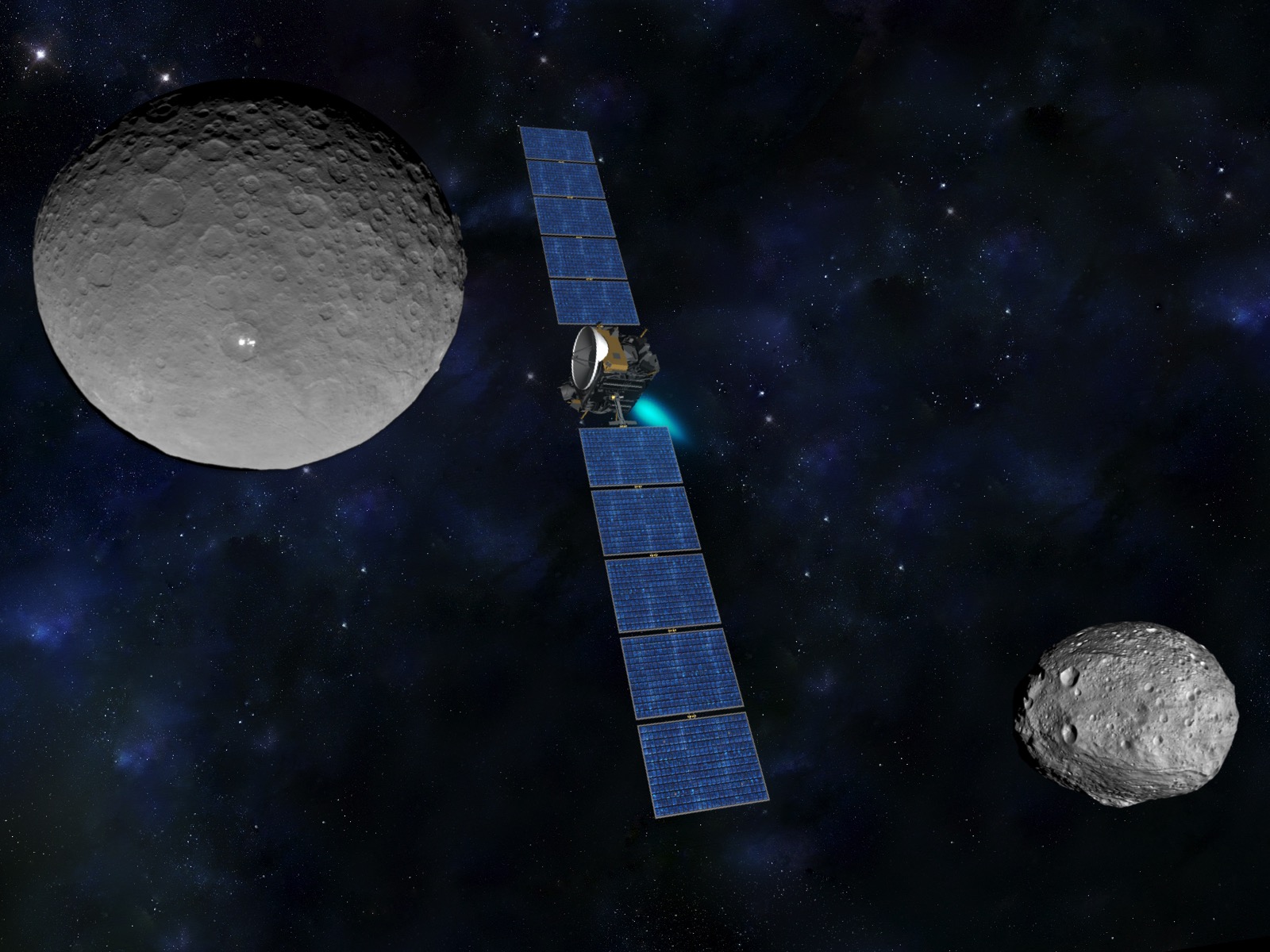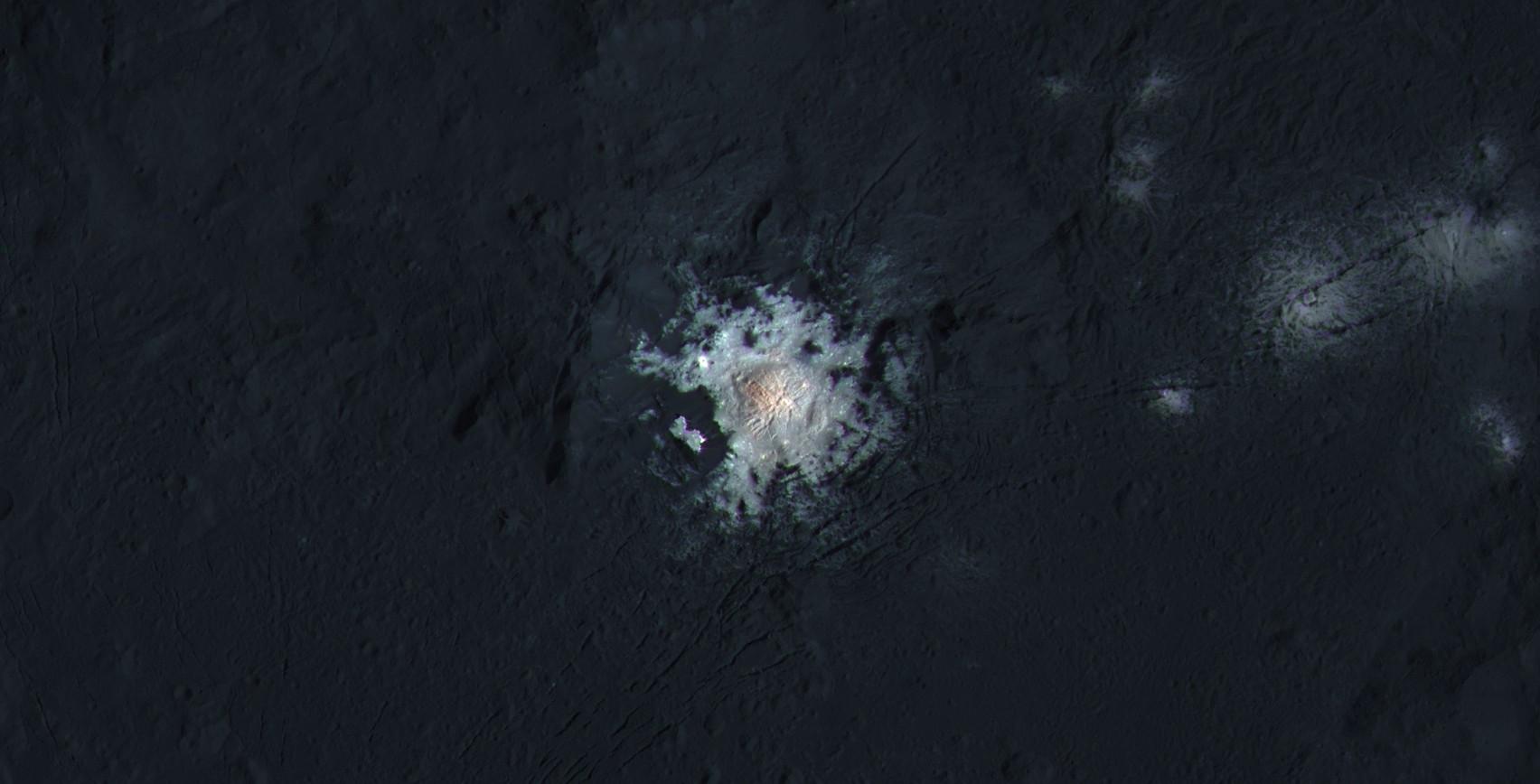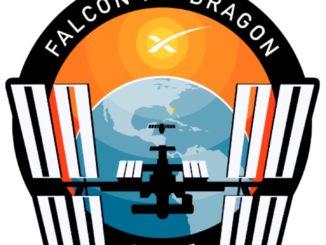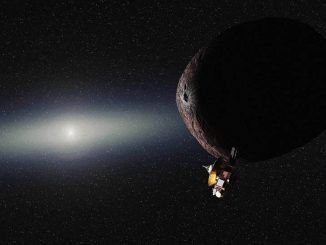
In the ten years since its launch from Cape Canaveral, NASA’s Dawn spacecraft has orbited the two largest worlds in the asteroid belt and overcome defective components that threatened to derail the mission on its 4 billion-mile voyage, discovering unexpectedly rich geologic tapestries suggesting both destinations have a watery past.
The roughly $500 million project has made history, becoming the first spacecraft to orbit two different objects other than the Earth and the moon, and making the first up-close surveys of the dwarf planet Ceres and the giant asteroid Vesta, which rank No. 1 and No. 2 among the biggest objects in the asteroid belt, a region between the orbits of Mars and Jupiter.
“Dawn has exceeded everybody’s expectations, and certainly mine,” said Carol Raymond, Dawn’s deputy principal investigator from the Jet Propulsion Laboratory in Pasadena, California. “I think it’s been an exceptional mission from so many different perspectives. Certainly, the fact that we flew to and orbited two objects in the main asteroid belt, the two most massive objects in the main belt, is a feat in and of itself.”
Spaceflight Now members can read a transcript of Carol Raymond’s interview.
The mission almost never made it to the launch pad.
Cost overruns and difficulties with Dawn’s electric propulsion system — a set of three ion engines using electricity and xenon gas to produce thrust — prompted NASA to cancel the mission in March 2006. The space agency reinstated the mission less than a month later after an appeal from managers at JPL.
NASA selected the Dawn mission in 2001 from a list of proposals submitted by scientists. Then slated for launch in 2006, Dawn joined NASA’s Discovery line of cost-capped missions exploring the solar system, a program that has included the Mars Pathfinder rover mission and the Messenger orbiter sent to Mercury.
Built by Orbital Sciences Corp. — now known as Orbital ATK — the solar-powered spacecraft was finally readied for a June 2007 launch aboard a United Launch Alliance Delta 2 rocket. But problems with a crane needed to help assemble the rocket and an aircraft needed to receive telemetry from the launcher after liftoff forced a delay until September.
Dawn finally blasted off from Florida’s Space Coast just after sunrise Sept. 27, 2007, getting an interplanetary kick toward Mars for a swingby in February 2009 that reshaped the probe’s trajectory to take aim on Vesta, where it arrived in July 2011.
But Dawn lost the first of its four reaction wheels on the trip to Vesta in 2010, and a second wheel failed in 2012 as the spacecraft prepared to depart the approximately 330-mile-wide (530-kilometer) asteroid.
The spinning reaction wheels used momentum to control Dawn’s orientation without expending precious chemical propellant, helping aim its antenna toward Earth and point its camera and scientific sensors toward their targets.
With two of the wheels lost, ground controllers at JPL and Orbital ATK devised a hybrid control method to point the spacecraft using a blend of its hydrazine thrusters and reaction wheels, minimizing fuel consumption on the solar-powered probe.
“There were a couple of dramatic points,” Raymond said in an interview with Spaceflight Now. “The first was right before launch when we learned that we were launching with defective reaction wheels, and there was nothing we could do about it. We went into a mode where we were trying to preserve wheel lifetime.”
Dawn’s time at Vesta yielded several big surprises, chiefly with the discovery of evidence that liquid water may have once flowed on the asteroid, Raymond said.
Scientists already have some samples from Vesta in laboratories on Earth.
Before Dawn’s mission, researchers suspected a special class of rock samples called Howardite–Eucrite–Diogenite, or HED, meteorites that fell to Earth from space were chunks knocked off Vesta by an ancient interplanetary collision.
Dawn confirmed that hypothesis, and found Vesta likely once had global tectonic activity, something scientists did not expect on such a small world.
The Dawn spacecraft’s German-built camera suite found pits in the bottom of several relatively fresh craters on Vesta, suggesting volumes of gas — perhaps water vapor — were released by violent impacts with other asteroids.
“In the same young craters where we saw the pitted terrains, Marcia Crater and Cornelia Crater, there are gullies which are grooves carved into the slopes of the crater in a dendritic pattern, which can’t be explained, or are hard to explain, without invoking a liquid flowing on the surface, and the most obvious volatile would be water,” Raymond said. “So there is a hypothesis that water was delivered by an impactor, the ice was buried in the subsurface and the ejecta, and then a subsequent impact would melt that ice, it would briefly flow and sublimate and leave behind these telltale gullies.”

Many scientists believe an extraterrestrial impactor — a comet or an asteroid — brought water to Earth soon after it formed.
“This idea that wet asteroids, more volatile-rich asteroids, could deliver water to the Earth was lent some credence by the fact that we could see the evidence of that volatile delivery to a body like Vesta,” Raymond said. “I think those kinds of results made very clear that going to Vesta and investigating it up close really had a big payoff above and beyond the fact that we already knew so much about Vesta from those samples we had in hand.”
Dawn switched on its ion drive again in 2012 for the journey to Ceres, moving farther out into the solar system and adjusting the tilt of the probe’s orbit around the sun to from 7 to nearly 11 degrees. The maneuvers put Dawn on course to be captured by Ceres’s gravity field in March 2015.
Before Dawn’s arrival, the best imagery of Ceres from the Hubble Space Telescope gave scientists a glimpse of the mysterious mini-planet’s appearance. Scientists knew its size and shape, and they believed Ceres might contain a sub-glacial ocean.
Ceres astonished Dawn’s team almost as soon as the spacecraft moved within visual range.
“The big surprise during the early approach phase was that there is an area of high reflectivity near Occator (Crater),” said Andreas Nathues, lead investigator for the framing camera team at the Max Planck Institute for Solar System Research in Gottingen, Germany. “It was so bright in the first images that we saturated all the chips (in the camera) because we didn’t expect such a bright feature on a dark surface.”
The bright spots in Occator Crater immediately triggered speculation that they might be icy patches, or perhaps an erupting volcano spewing water into space. Scientists initially favored the ice explanation, but a closer examination by Dawn’s science instruments revealed them to be deposits of sodium carbonate, a type of salt.

The presence of salts inside the 57-mile-wide (92-kilometer) Occator crater has left experts trying to learn how the deposits got there.
Ralf Jaumann, a planetary scientist and Dawn co-investigator from Germany’s DLR space agency, said one leading theory are that the impactor that excavated Occator created a pool of melted rock and water, an impact-driven hydrothermal system that separated different chemicals in the aftermath of the cosmic smash, leaving behind the salt slabs at the surface.
“Another idea is that we have (watery) material beneath the surface, which has been released by the impact itself,” Jaumann said. “So the impact triggered cryovolcanic activity. There’s an open debate about this. It’s not clear how this works.
There still may be water underneath the bright salty features in Occator, which have been named Cerealia Facula and Vinalia Faculae. The central deposit has a fractured salt dome.
“I’m pretty sure that there’s also water in Occator in the subsurface,” Jaumann said. “The problem we have is all of our instruments are not able to penetrate the surface. We just get the first millimeters of the surface in our data.”
A mountain on another part of Ceres, named Ahuna Mons, is an example of a more recent cryovolcano. The peak, towering more than 15,000 feet (5 kilometers) above nearby terrain, is no longer erupting, but scientists believe it only went dormant in a relatively recent era of geologic history, perhaps as little as a few hundred million years ago.
Ahuna Mons likely spewed out a mixture of water, salt and mud that flowed down its slopes.
“We’re seeing that there are features on the surface which indicate mobility,” Raymond said. “There are cryomagmas that have erupted at the Ahuna Mons volcanic construct, as well as the bright spots inside of Occator crater and other craters. So we do think that there are residual pockets of briny liquids in the subsurface today, and the real challenge that we’re working on is by what process are they getting to the surface.”
The briny stuff could be water saturated with salts, lowering its freezing point and allowing it to remain liquid at depths of up to 30 miles (50 kilometers).
Although the buried ocean is gone today, Ceres likely had one earlier in its history, drawing comparisons to Europa and Enceladus, icy moons of Jupiter and Saturn with subsurface seas that have become hotspots in the search for alien microbial life.
But Ceres is much closer to the sun than Europa or Enceladus, and those moons have their insides tugged at by the strong gravity of Jupiter and Saturn, generating internal heat that keeps their oceans liquid to the present day.
“There is an affinity between some of the icy moons and Ceres, and certainly they do bear resemblances,” Raymond said. “But since Ceres now lives in such a warm environment relative to those objects, it looks very different. Its ocean froze out. It doesn’t have any tidal heat. So it’s ocean is frozen, and its surface is baking relative to the icy moons. The way it formed, what it formed of, appears to be similar, but the evolutionary paths are quite different.”
Dawn’s gamma ray and neutron detector has sensed hydrogen in Ceres’s crust, suggesting ice embedded in the dwarf planet rocks.
“Liquid water had to be in the interior of Ceres in order for us to see the mineralology that’s on the surface — the phyllosilicates (clay minerals) — and also the concentration of the hydrogen that we see in the equator that’s presumed to be ice-free,” said Thomas Prettyman, lead scientist on Dawn’s Gamma Ray and Neutron Detector, or GRAND, instrument from the Planetary Science Institute in Tucson, Arizona.
“So Ceres’s surface, the fact that it’s ice-rich, and that there are alteration products on the surface, means that at some point in time there was liquid water,” Prettyman said in a press conference last year.
Ceres formed from a collection of pebbles and dust in the proto-solar system around 4.5 billion years ago, likely farther from the sun thats its current location, giving it a heritage closer to the moons of the outer solar system than most asteroids.
“The material in Occator, the supposed cryovolcanic deposits at Ahuna and the craters, are dominated by sodium carbonate and ammonium salts, and that composition is only found in certain deposits on the Earth that are created in briny lakes, and coming out of the interior of Enceladus in the plumes,” Raymond said. “This is a very fundamental connection between what’s coming out of Enceladus and what we’re seeing on the surface of Ceres. It doesn’t seem to very common in the solar system.”
NASA granted Dawn a one-year extension in mid-2016, and Raymond said mission managers are waiting for the agency to determine what the spacecraft will do next.
Dawn lost its third reaction wheel earlier this year, leaving it fully reliant on rocket thrusters.
“The spacecraft is still operating,” Raymond said. “It’s in excellent health. The instruments are all operating. I think that’s pretty remarkable after 10 years, that everything is working as well as it is, other than the doomed wheels, which were a problem from the start.”
Dawn is currently orbiting in a 30-day elliptical loop ranging from less than 3,200 miles (5,100 kilometers) up to 23,800 miles (38,300 kilometers) from Ceres. The spacecraft is collecting data on cosmic rays in a bid to improve measurements of Dawn’s surface composition, Raymond said.
“The status of our extended mission proposal is that what Dawn is going to be doing is still under evaluation,” Raymond said. “It’s really unfortunate that we don’t have answer because obviously a lot of people are going to be looking at Dawn because it’s the 10th anniversary of the launch. It would be nice to have an answer, but we don’t.”
Jim Green, director of NASA’s planetary science division, said last month that senior managers want to ensure Dawn gets al the data it can at Ceres before running out of fuel. That push is being balanced with the desires of some scientists to send Dawn toward another object in the asteroid belt for a flyby.
NASA nixed a proposal last year to send Dawn on a low-speed flyby of asteroid Adeona in favor of continued observations at Ceres, but Raymond said there are still options to redirect the spacecraft to another object with its xenon-fueled ion engines.
“We will have fuel to operate for at least another year at Ceres,” assuming Dawn remains at relatively high altitudes, Raymond said. “It’s just a matter of what we’ll be doing, not necessarily whether we’ll be doing something.”
Perturbations from Ceres’s gravity at distances within a few hundred miles of the frozen world would tax Dawn’s dwindling fuel reserve to maintain pointing.
“If we go back down low, like into a low-altitude orbit that we were in, we wouldn’t last a month,” Raymond said.
“We’re actually doing a lot of study right now of how we could get the best new data at Ceres,” she said. “We’ve collected so much data that the challenge is, with the same flight system and the same instruments, how do you get new science data. We’re looking hard at that.”
Email the author.
Follow Stephen Clark on Twitter: @StephenClark1.



